Bresee Bible
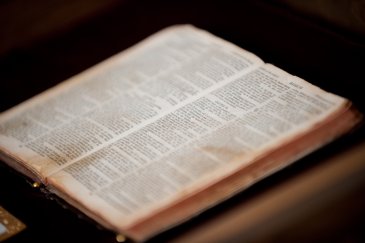
There is a Bible on campus, encased in protective glass, that belonged to Phineas Bresee, founder of the Church of the Nazarene and the university’s first president. It is opened to Isaiah 62, the chapter Bresee claimed for the school. Permanently marked with his fingerprints, it displays a double message: God’s words in Isaiah 62 and Bresee’s love for those words.
In 1902, PLNU was founded as Pacific Bible College. The first class began with just 41 students. Although Bresee is known as the university’s founder, a group of six people, mostly women, had been praying for a school in Pasadena since 1897. Their vision was for a Bible college, but Bresee’s ultimate goal was to create a Christian liberal arts institution. “Point Loma Nazarene University was founded by Phineas Bresee to be what did not exist elsewhere — a great Christian holiness university,” wrote Ron Kirkemo (65), Ph.D., late professor of political science, in his book Promise and Destiny.
By 1910, Bresee had purchased the Hugus Ranch land in Pasadena, and the college became Nazarene University. Although there was growth, Bresee also faced many financial challenges and the possible collapse of the institution. As he prayed, Bresee felt that God was promising him a future for the university through the words of Isaiah 62. The chapter was a promise to Bresee that God would not remain indifferent (v. 1) for He considered the institution to be precious (v. 3), would not let it be forsaken (v. 4), and would set watchmen on the wall to protect it (v. 6). The university would become strong (v. 7-9) and be known for its righteousness (v. 2). People would seek out this place of Christian life and service (v. 12). Students would pass through its gates to be road builders and standard bearers for the Lord (v. 10).
The Bresee Bible and its visible marks of use remind us to be grounded in Scripture and faithful in prayer. Bresee’s belief in a well-rounded education and serving the poor as an expression of faith remain central to PLNU’s mission. The promise in verse three conveys God’s passionate love for his people: “You will be a crown of splendor in the Lord’s hand, a royal diadem in the hand of your God.” God’s love is a sustaining force that remains the university’s ultimate reason for being.
The Calling
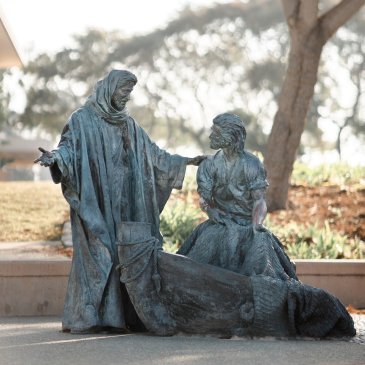
The Calling by Scott Stearman is a life-sized bronze sculpture depicting Jesus’ calling of Peter. The Calling was presented to the university in 1997 by the Women’s Auxiliary.
“The Calling sculpture at the heart of campus reminds us of our responsibility to answer Jesus’ call to become his disciple and our role in helping students respond to Jesus’ call to become disciples,” explained President Kerry Fulcher. “This is at the heart of PLNU’s history and Christian mission, rooted in the Great Commission.”
On his website, Stearman says, “I believe in the power of art to speak into our culture. The tone of a community is enhanced when art speaks clearly of the unchanging truths that are so important to you and me.” The Calling speaks to the PLNU community about our faith and the driving force behind everything we do.
The Calling is located on the Campus Mall between Ryan Library and Nicholson Commons.
The Cross
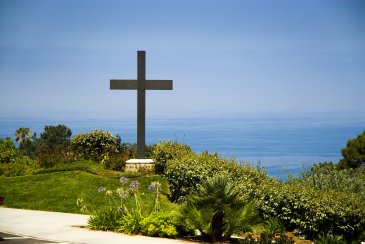
When PLNU purchased its current Point Loma campus from Cal Western University, there was a wooden cross near the entrance to the school. Thin and aged, the cross was nevertheless an important reminder of what was most important. That’s why the cross was upgraded to its current form in the mid-1990s.
“I liked the symbolism and wanted PLNU to never forget their primary mission is to serve God,” said George Fermanian who was instrumental in the rebuilding of the cross.
“I hired an artist who worked in bronze to design and fabricate the cross,” Fermanian said. “It is made out of Naval bronze, the same material they use for anchors on ships. I also designed the concrete to ‘present’ the cross.”
Fermanian aimed to provide a space that was special, elegant, and multifunctional. In fact, the cross has become just that. Campus clubs and activity groups often meet at the cross. Students often gather informally there to pray, worship, visit, or take in a sunset. An iconic spot for photos, the cross offers spectacular views of God’s creation.
The Greek
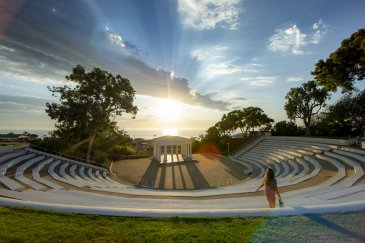
The Greek Amphitheatre at PLNU was the first Greek theater built in the United States. Construction began on July 1, 1901. The theater was commissioned by Madame Katherine Tingley, leader of the Theosophical Society, which occupied PLNU’s current site at the turn of the 20th century. According to the San Diego History Center, “It was Madame Tingley’s dream to found ‘an Athens of the West’ at Point Loma.”
First constructed were the tiers that form the amphitheater’s seats. Around 1910, the Doric stoa was added. The style of architecture is known as Magna Grecian.
The Greek Amphitheatre held its first public performance, a play entitled “The Aroma of Athens,” in 1911 and was thereafter used by the Theosophical Society for music, drama, Shakespearean and Greek classics, and pageantry. After Tingley passed away in 1929, productions reportedly ceased for many years. When Cal Western University took over the site, they revived productions in the theater and added structural support.
Today, the Greek is an important location for events at PLNU. Students begin their academic journey by gathering in the Greek Amphitheatre during Welcome Week. They complete their time at PLNU in the same location, walking across the stage at the Greek upon their graduation. In between, the Greek is often a casual meeting and study space. It also is home to special events and concerts.
Centenary Passage
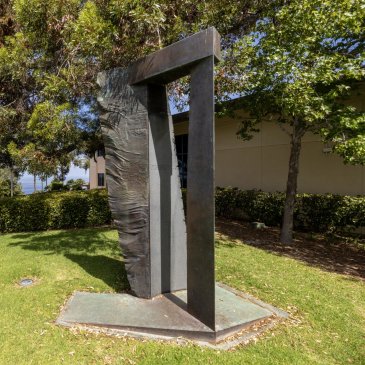
The Centenary Passage is a 10-foot work of granite and bronze created by local artist and former Point Loma Nazarene University art and design faculty member Peter Mitten. It was commissioned to commemorate the university’s centennial during the 2001-2002 academic year. It is located on the south lawn of the Cooper Music Center.
When Mitten was looking for inspiration for the work, he turned his attention to Isaiah 62, the university chapter. Isaiah 62:10 says, “Pass through, pass through the gates! Prepare the way for the people. Build up, build up the highway! Remove the stones. Raise a banner for the nations.”
Isaiah 62 was claimed by PLNU’s founder, Dr. Phineas Bresee, as God’s promise to him for the university. The early years of what was then Pacific Bible College were difficult financially, but Bresee believed God had great purpose for what would one day be Point Loma Nazarene University.
The Centenary Passage includes the words of Isaiah 62:10 in multiple languages, including English, Spanish, and Hebrew as well as in computer code. There are also images of the Pasadena Campus. The passage is narrow and creates a window to look across the campus. It provides a pathway to traverse. In 2002, Dr. Dean Nelson, director of PLNU’s journalism program, interviewed Mitten for an article in the alumni magazine, the Viewpoint. Mitten told Nelson, “It’s not literal, except for the scripture text. It doesn’t tell a story or give an illustration. It’s not a bank of video monitors. It’s a marker. It has layers of meaning. It involves physical motion. You walk through it. It invites individual experience.”
Lyle and Grace Prescott Prayer Chapel
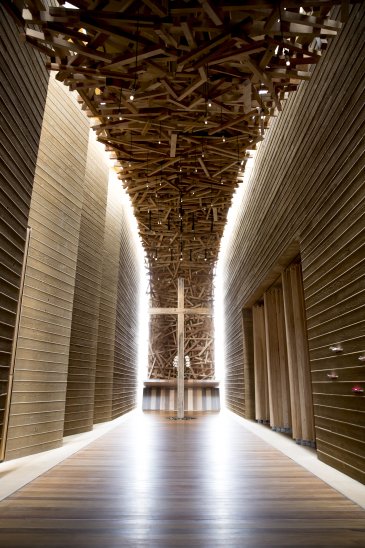
On May 1st, 2018, the new Lyle and Grace Prescott Prayer Chapel opened, becoming an ever-present reminder of the university’s commitment to Christ and holiness as a way of life.
The original Lyle Prescott Memorial Prayer Chapel with its stained glass windows, cedar paneling, wood-beam ceiling, interior fountain, and simple wooden cross hanging inside came into existence in 1973 on the Pasadena Campus. The Chapel was uniquely designed to house sixteen worshipers at a time and was made possible through the fundraising of students and faculty who contributed $30,000 to the chapel project. One of the ways students met this goal was earning money to move 105,000 library volumes by hand to the new Pasadena College Library.
The prayer chapel was built in memory of Lyle Prescott who served as a Nazarene missionary in the Caribbean as well as Central and South America from 1944-1970. Tragically, Lyle Prescott was drowned in the Virgin Islands in 1970 and on June 2, 1973, Reuben Welch and Shelburne Brown dedicated the newly constructed prayer chapel in his honor at a special ceremony attended by the Pasadena College faculty, staff, and students. The service encouraged students and staff to personally surrender their lives to God and emphasized that the prayer chapel had been specially designed to be a reminder of Lyle Prescott’s personal dedication to Christian service. Therefore the chapel was dedicated as a special place of prayer and meditation of God’s Word.
Shortly after the completion of the Lyle Prescott Chapel in 1973, the present Point Loma campus was purchased, and soon after a move south was in progress. Even though the location of the school had changed, the students expressed their desire for the Prescott Chapel to be relocated on the Point Loma Campus. In 1974, fundraising began in an effort to relocate the chapel from Pasadena to Point Loma. Shortly thereafter the chapel was dismantled into ten foot panels and moved on two flatbed trucks to the Point Loma campus.
“One of the important decisions I think for our Pasadena students was moving Prescott Prayer Chapel. It had just been completed. For students, that was important. Some of the students who helped get that building built came with us, and so this was another way to say, ‘This isn’t all new,’” said retired Dean Jim Jackson, Sr.
In 2018, Prescott Prayer Chapel was moved again, this time only a short distance on the Point Loma campus, but due to structural problems and decay, the chapel was largely rebuilt. However, the large original stained glass window was kept and placed as a marker between the new prayer building and Brown Chapel. The smaller stained glass windows now adorn the garden outside the chapel. The gardens also contain six stones. The stones honor the group of people, mostly women, who prayed for a Nazarene university before PLNU’s founding in 1902. There is also a fountain dedicated to the late Janet Benefiel.
Hand of God
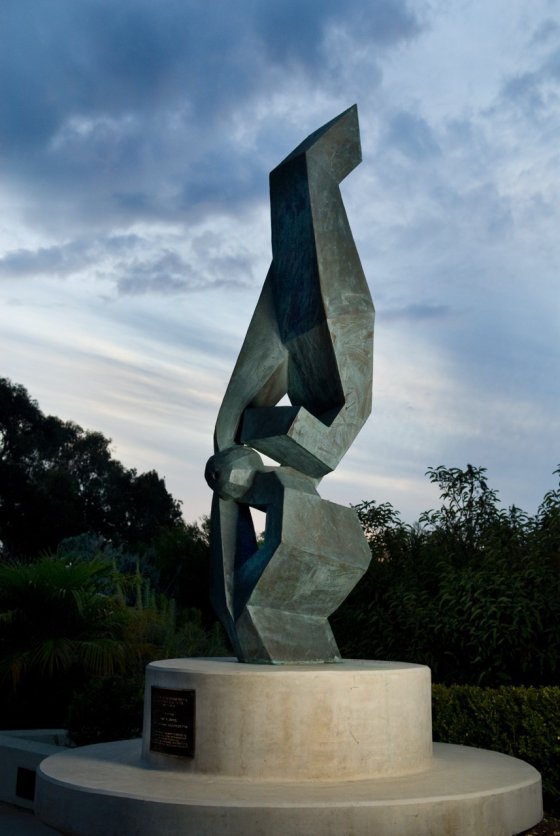
The Hand of God sculpture by Victor Riesau is located outside the Fermanian Business Center. It was installed in 1991 and was dedicated in memory of James A. Gabriel in 1992. Riesau also created the “Bull and Bear” sculpture inside the Fermanian School of Business building.
Smee Hall & Mission Valley Regional Center Stained Glass
Some of the best-loved stained glass artwork on campus was created by PLNU professor emeritus and administrator Dr. David Strawn. Strawn served as professor of mathematics and computer science at PLNU from 1971 to 2008. He was also vice provost for international studies and dean of the College of Arts and Sciences.
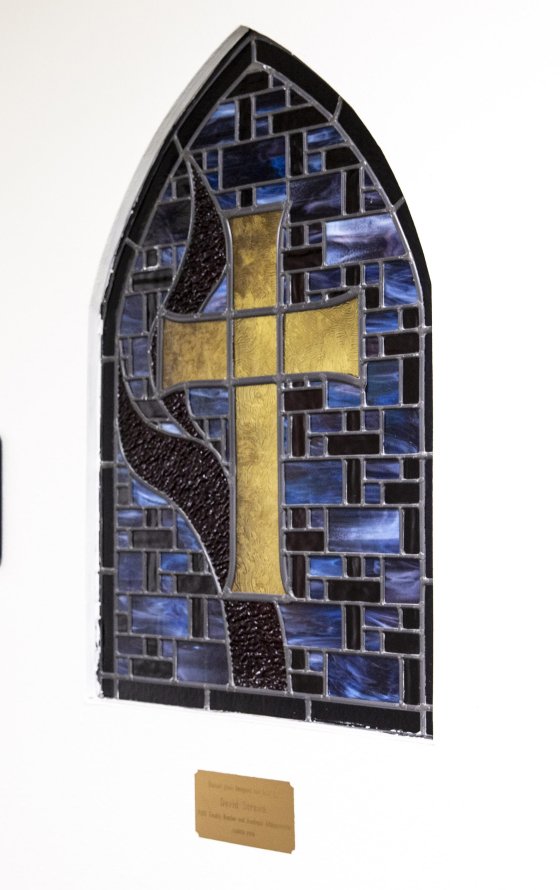
Strawn’s first piece for Point Loma was for the Wesleyan Center. Strawn originally took up stained glass work after visiting Epworth Memorial Church in England. Epworth was the home parish for John and Charles Wesley, and the brothers appear in Epworth’s chancel window along with John’s dying words. That window inspired the design for the two door inserts in PLNU’s Wesleyan center.
Strawn found another artist to paint John and Charles and explained that each hand-painted piece had to be carefully covered with black ground glass, which becomes part of the glass when fired. There were around one hundred painted pieces within the two windows. In one window, he used the words from the Epworth chancel window, “The best of all, God is with us.” In the other, he used the words from Charles Wesley’s poem, “Amazing love, how can it be.”
Strawn also created the stained glass window at the Whitcomb Family Chapel at the Mission Valley Regional Center. The window features a cross and flame and was originally lit from the inside with special bulbs. Though those lights have burnt out, the window still contains beautiful colors and design.
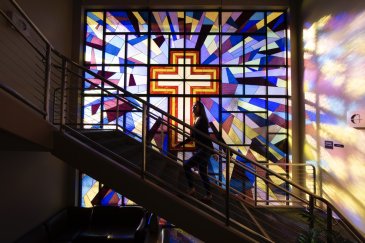
Strawn’s largest project was the wall-sized piece at the front of Smee Hall. When it was built in 2008, it was the largest stained glass window in San Diego and may still be. Because of the size of the window, Strawn worked with the architects of the building, structural engineers, and the California Coastal Commission to bring the project to life.
The Smee stained glass window is unique not only in size but also in its use of dichroic glass, which transmits one color and reflects a completely different color. This means that the piece is completely different in color when viewed from the inside of the building versus the outside.
“I made the design so that all of the streaks or rays emanated from the center of the cross,” Strawn said. “That supported my theme that, ‘Life emanates from the center of the cross.’”
The stained-glass window was gifted by the Find Us Faithful Foundation in honor of Frank and Leah Clouse.